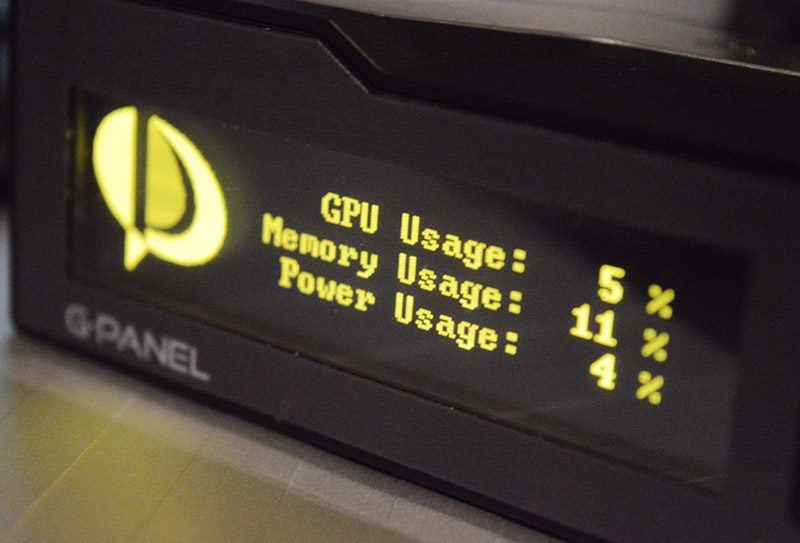Palit GameRock Premium GTX 1080 Graphics Card Review
John Williamson / 8 years ago
A Closer Look
The Palit GameRock Premium GTX 1080 sports a rather unusual colour scheme which is likely to divide opinion. Often, AIB partners fixate on the red and black theme or ensure each graphics card has a neutral aesthetic. The reasoning behind this is to easily allow the product to fit in a wide range of builds and have widespread appeal. Saying that, the overreliance on these colours can result in a lack of enthusiasm from consumers who yearn for a more innovative design strategy. Evidently, Palit hasn’t taken the safe approach and based their new graphics card range on a distinctive infusion of colours. Honestly, the white shroud is visually-pleasing and the blue angled section forms a superb contrast. Not only that, the subtle GameRock branding and lighter fan blades add to the product’s unique appearance.
As previously mentioned, the graphics card is absolutely massive and takes up 3-slots. More specifically, the GPU is just under 11-inches long and has a depth of around 2-inches. Therefore, it’s not a suitable choice for SLI configurations or users who intend to populate other PCI-E slots with a sound card or M.2 adapter next to the graphics card.
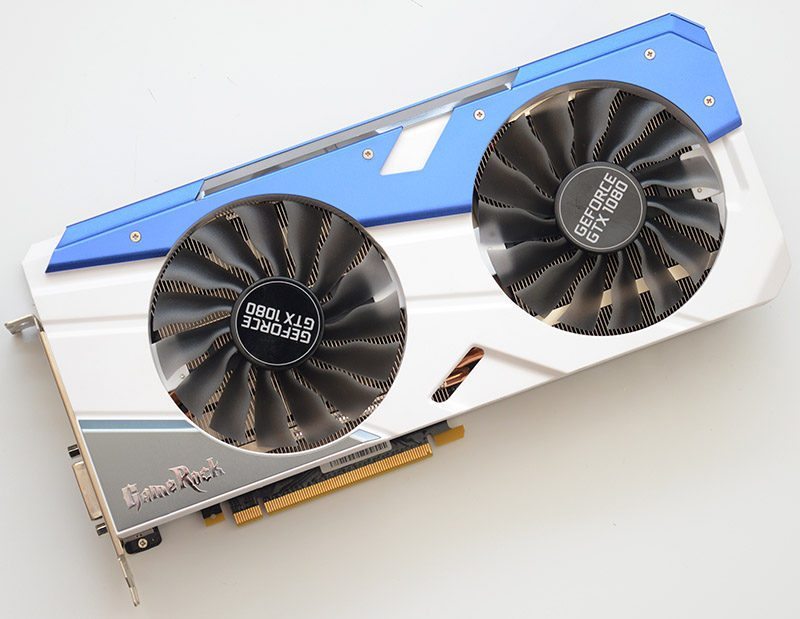
Here we can see the product has been reinforced with a sturdy backplate which reduces the probability of drooping and prevents too much pressure from being applied to the PCI-E slot. Furthermore, the backplate protects the PCB from accumulating dust and certainly looks the part.
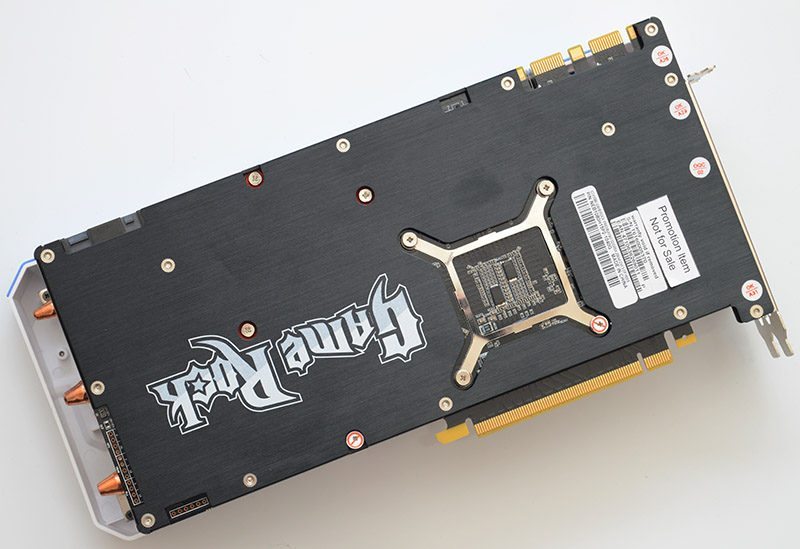
Palit has deployed an 8+2 PWM to stabilise voltage levels and ensure the end-user can apply a large manual overclock without encountering any power restrictions. On another note, the graphics card utilises DrMOS which reduces thermal loads via high current circuits. Just in case any issues arise, there’s a dual BIOS switch which includes the same BIOS version. The graphics card’s cooling solution is substantial and revolves around two huge aluminium heatsinks, 5 heat pipes and dual fans with high-angled blades. Furthermore, the fans spin in alternate directions to reduce turbulence.
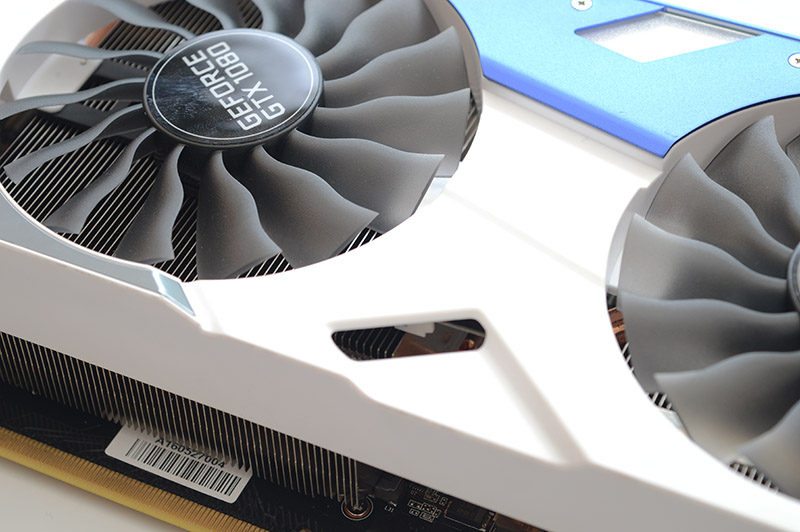
Near the backplate, there’s a number of measurement points to monitor key voltages. This is quite useful if you’re a professional overclocker trying to eke out every last inch of performance.
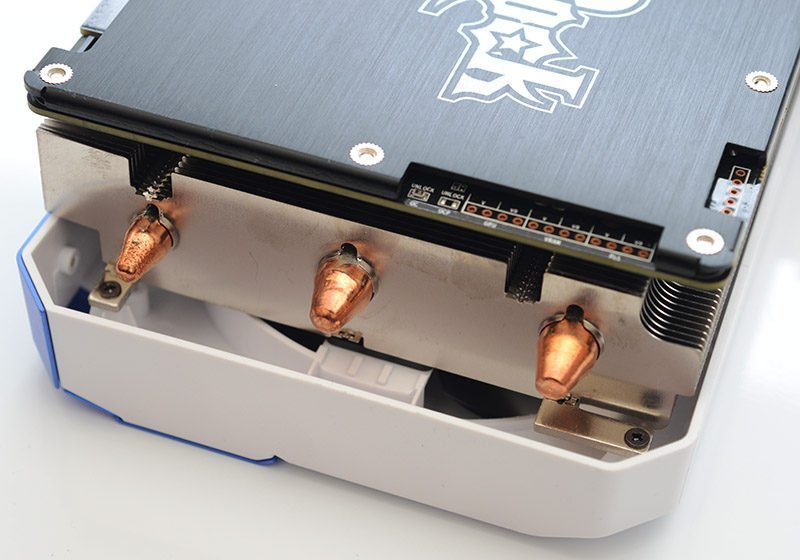
As expected, the graphics card requires a 6-pin and 8-pin PCI-E connector. From this angle, we can also see the product’s huge size which may be a concern to users opting for a small-form-factor build.

When it comes to connectivity, the graphics card houses a dual-link DVI-D, three DisplayPort 1.4 and an HDMI 2.0b. According to Palit, the honeycomb bracket increases airflow by up to 15% and allows heat to be exhausted in a more efficient way.
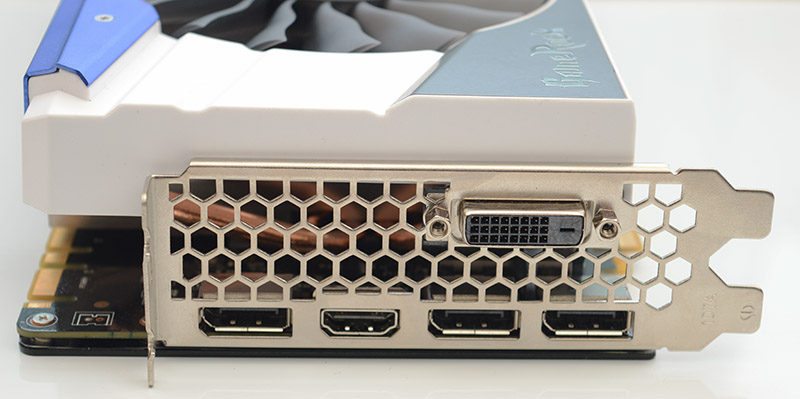
In a similar vein to Palit’s GTX 1080 GameRock Premium, the graphics card supports RGB lighting and you can change colours based on GPU temperature or cycle through the full range of rich, vibrant shades using the rainbow mode. Of course, this might be too distracting, and it’s possible to simply select your favourite colour without any transitional effects. The colours are extremely bright and look fantastic.
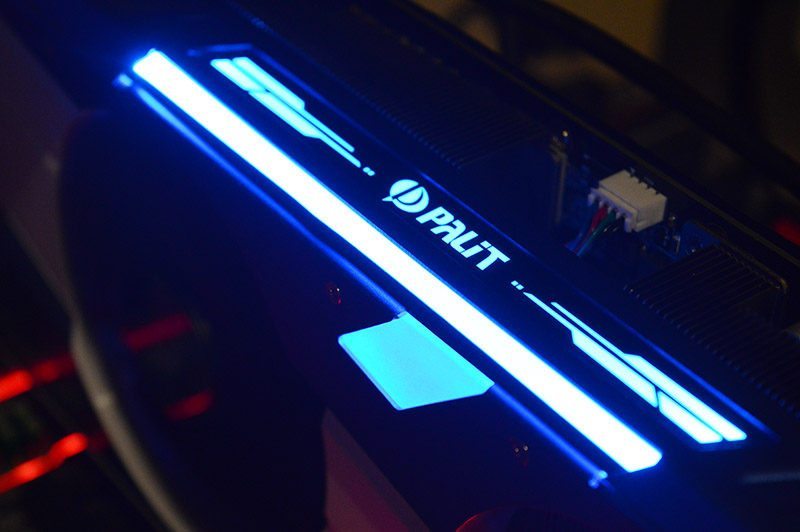
The G-Panel can be configured to relay information about the graphics card and requires a button press to alter what is being displayed. By default, the unit outlines the time alongside the Palit logo. Please note, the text is remarkably clear even when used in direct sunlight. Unfortunately, there’s no way of changing the text brightness which might have been a useful feature if the unit seems overly bright in a dark work environment.
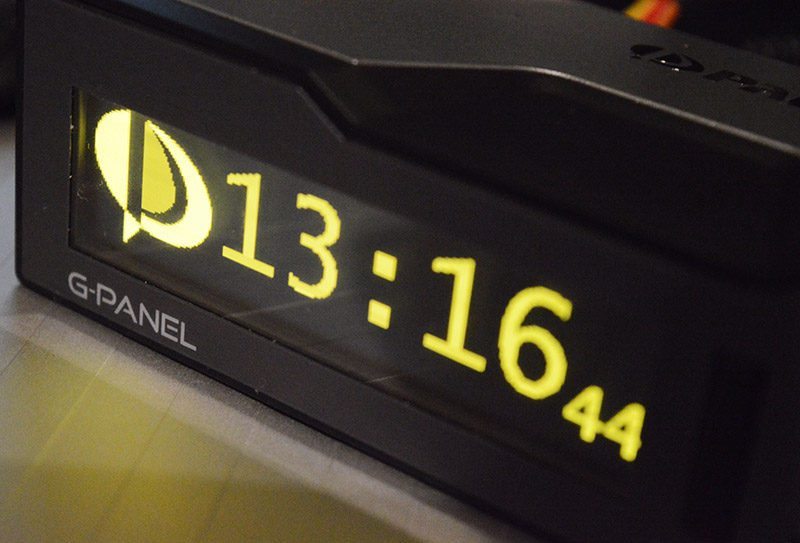
Here we can see the G-Panel outlines information on the graphics card’s model, memory interface/size, BIOS version, driver version and G-Panel firmware.
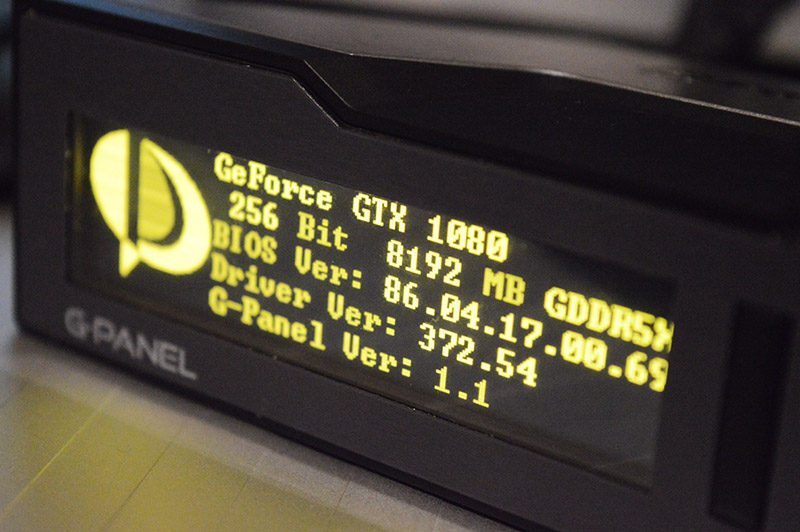
When selecting the next mode, details about the clock speeds, voltage, fan speed and temperature are provided.
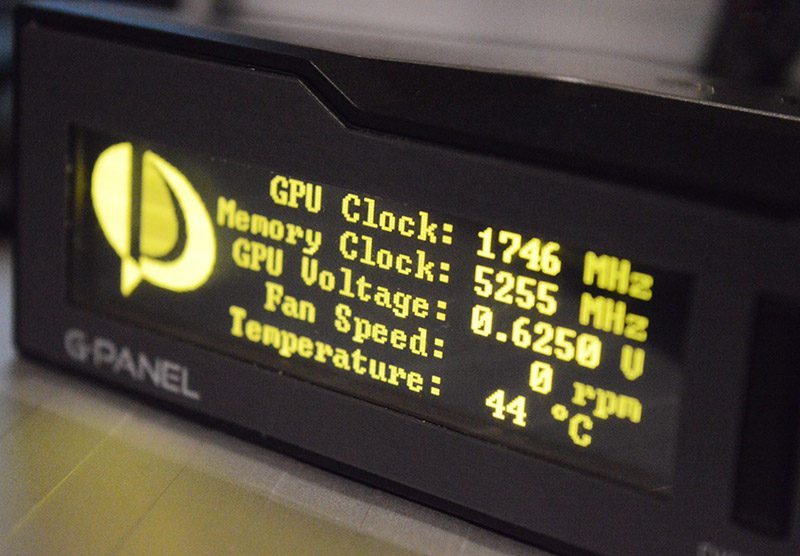
Finally, the G-Panel lists GPU usage, memory usage and power usage statistics as a percentage.
